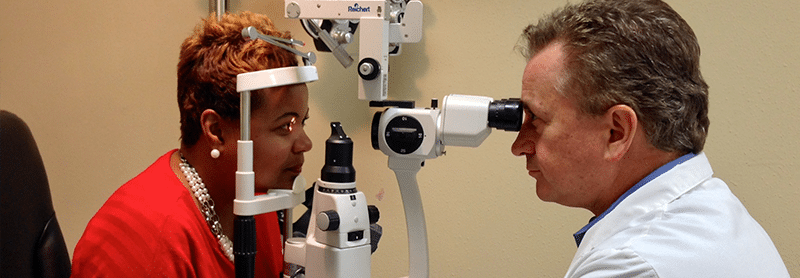Dr. Rautio’s Solutions to Dry Eyes
As an optometrist specializing in the treatment of dry eye diseases (DED), I have found that screening for and treating the associated Meibomian Gland Dysfunction (MGD) has led to significant improvement in patient comfort and long-term resolution of their condition.
In 2011, the Tear Film & Ocular Surface Society published a defining study indicating that Meibomian Gland Dysfunction (MGD) is one of the major causes of dry eye disease (DED). The study, which involved more than 50 global experts over the course of two years, explored the structure and function of the Meibomian glands in our eyelids and discovered that decreased function, due to excessive numbers of Staphylococcal bacteria and inflammation, had been greatly underestimated as one of the primary causes of dry eye disease.
Most patients today have, unfortunately, learned to accept their “dry eyes” as normal. According to a recent Harris Survey, most dry eye sufferers try at least three different tear supplements before giving up with little relief. Even though we now have prescription eye drops available for dry eye treatment, we have found that they don’t treat the main underlying cause of the problem, and that is MGD.
About 10 years ago, we started paying particularly close attention to the eyelids of our dry eye and post-LASIK patients and found a tremendous number with completely plugged Meibomian gland openings. We now know that these plugged oil glands lead to a marked decrease in the lipid (oily) layer of the tear film, which leads to increased tear evaporation and increased signs and symptoms of dry eye.
Our experience, over the past decade, supports the current research suggesting MGD-related dry eye is one of the most overlooked ocular conditions found today. Fortunately, 80-90% of our patients with dry eyes benefit from a simple treatment regimen of heat, massage, and an antibiotic eye drop. We can also use Restasis and/or Xiidra in conjunction with these lid treatments on patients with systemic illnesses such as rheumatoid arthritis or diabetes because of their decreased tear production.
Lastly, even though there is no magic bullet, following our simple MGD protocol allows our patients to enjoy healthy, happy eyes and eyelids with the elimination of fry eye and the discomfort experienced before treatment!
About the Author
Dr. Jeff Rautio practices with Dr. Daniel S. Haddad at The Laser Eye Institute in Troy, Michigan. A graduate of the Michigan College of Optometry, Dr. Rautio specializes in LASIK, LASEK, SMILE, and Cataract pre-and post-operative care along with a sub-specialty in the diagnosis and treatment of DED and MGD.
Share This Article
Posted by Amanda Zellar
Amanda helps patients improve their lives through the power of LASIK. A patient coordinator at Laser Eye Institute, Amanda assists patients through every step in their start-to-vision journey.

